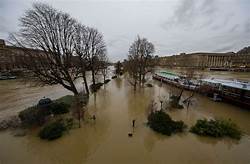TRENDING WHITEPAPERS,VIDEOS & MORE

matt
Key Bank Acquisition Provides Access to Wealthy Consumers
- Friday, 18 January 2019

Key Bank National Association acquired Laurel Road, the digital lending arm of Laurel Road Bank, because of its wealthy, well-educated client base.
Although well established in the student loan market, Laurel has expanded into the mortgage business, personal and secured loans over the past year, so it could develop relationships and cross-sell financial products to consumers.
The demographics of its consumers include: Around 70% of the clients are doctors and dentists with another 20% being lawyers and MBAs. And the overall demographics of this target client base is extremely attractive, an average age of 33, average FICOs of 760, and income of around $185,000. Laurel Road originated about $1.2 billion in loans in 2018.
“I would say that the credit quality and the nature of those loans, and more importantly the nature of those relationships, we think are consistent with our targeted customer base and we’re very excited about that,” said Don Kimble, CFO of Key, during the company’s quarterly call held earlier this week. “And so, it really is more of a relationship strategy for us.”
The Laurel Road acquisition will be about $0.02 dilutive, or add more than $50 million of expenses. In addition, Key is converting from a loan sale model to a retain model.
"However, it will continue the gain on sale model and “where we see a good quality relationship, we’ll probably retain it," said Kimble. "But one of the things we talk about is (Laurel Road’s) ability to originate mortgage loans. And if it's a conforming mortgage loan that we will probably sell that in the secondary market, like we do with our existing portfolio.”
Read more...Rates Hold Steady: Freddie Mac
- Wednesday, 16 January 2019

Interest rates remained flat after dropping for six consecutive weeks, according to the Primary Market Survey from Freddie Mac.
“Weaker manufacturing data and a more dovish tone from the Federal Reserve left mortgage rates unchanged relative to last week,” said Sam Khater, chief economist at Freddie Mac. “However, interest rate-sensitive sectors of the economy--such as consumer mortgage demand and homebuilder construction sentiment--are on the mend, which indicates that lower interest rates are beginning to have a positive impact on some segments of the economy.”
[caption id="attachment_9187" align="alignright" width="241"] Sam Khater[/caption]
Sam Khater[/caption]
Additional interest rate insights are as follows:
- The 30-year fixed-rate mortgage averaged 4.45 percent with an average 0.4 point for the week ending January 17, 2019, unchanged from last week. A year ago, the 30-year FRM averaged 4.04 percent.
- The 15-year fixed-rate mortgage this week averaged 3.88 percent with an average 0.4 point, down from last week when it averaged 3.89 percent. A year ago, the 15-year FRM averaged 3.49 percent.
- The 5-year Treasury-indexed hybrid adjustable-rate mortgage averaged 3.87 percent with an average 0.3 point, up from last week when it averaged 3.83 percent. A year ago, the 5-year ARM averaged 3.46 percent.
Natural Disaster Activity Was Above Average Last Year, Notes Corelogic
- Thursday, 17 January 2019

Last year was an above-average year for hurricanes, flooding, wildfires and severe winds, according to the Natural Hazard Report from Corelogic.
“In 2018, the U.S. continued to experience damaging weather and natural catastrophes in high exposure areas, and in some instances, in regions that had been impacted in less than a year prior,” said Howard Botts, chief scientist at CoreLogic. “Hazards will always pose a real threat to homes and businesses and knowing exactly what that risk entails is critical to helping ensure sufficient protection from the financial catastrophes that so often follow natural disasters.”
Highlights from the report include the following:
Flooding
- In 2018, there were over 1,600 significant flood events that occurred in the U.S., 59 percent of which were flash flood related.
- Residential and commercial flood damage in North Carolina, South Carolina and Virginia from Hurricane Florence is cost an estimated $19 billion to $28.5 billion, with around 85 percent of residential flood losses uninsured.
- Multiple states, including Texas, North and South Carolina, Maryland and Wisconsin, experienced 1,000-year floods; several of 2018’s floods occurred less than two years after the same areas’ previous 1,000-year flood events.
- Six percent of properties nationwide are within Special Flood Hazard Areas, and around one-third of those have flood insurance policies.
Atlantic Hurricanes
- The 2018 Atlantic Hurricane season experienced 15 named storms, eight of which were named hurricanes. Two of these, Hurricanes Florence (Category 1) and Michael (Category 4), made landfall along the U.S. This made 2018 the third back-to-back season of above-average hurricane activity in the Atlantic.
- Around 700,000 residential and commercial properties experienced catastrophic flooding and wind damage from Hurricane Florence, where it is estimated to have caused between $20 to $30 billion in insured and uninsured loss.
- Michael was the strongest hurricane to make landfall in the Florida Panhandle since 1900 and the strongest hurricane to make landfall in the U.S. since Hurricane Andrew in 1992. It is estimated to have caused $2.5 to $4 billion in residential and commercial insured losses from the wind and storm surge.
Wildfire
- The number of acres that burned in 2018 is the eighth highest in U.S. history as reported through Nov. 30, 2018.
- Eleven western states had at least one wildfire that exceeded 50,000 burned acres; the leading states were California and Oregon, each with seven fires that burned more than 50,000 acres.
- The November 2018 Camp Fire in Northern California destroyed nearly the entire city of Paradise and brought damage or destruction to 18,804 structures.
- The Woolsey wildfire in the coastal community of Malibu destroyed more than 1,600 structures.
- CoreLogic estimates that the combined total insured and uninsured loss for these two wildfires is between $15 billion and $19 billion.



